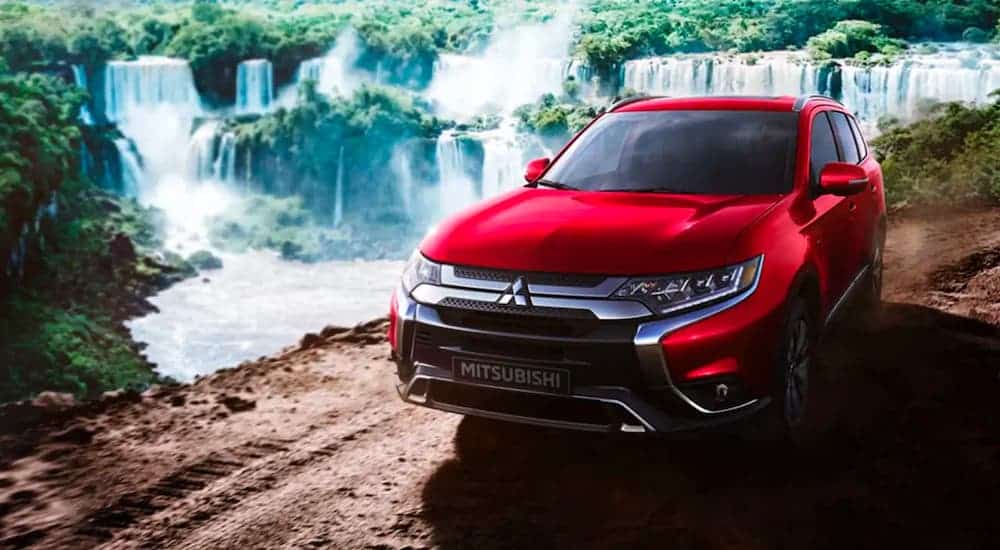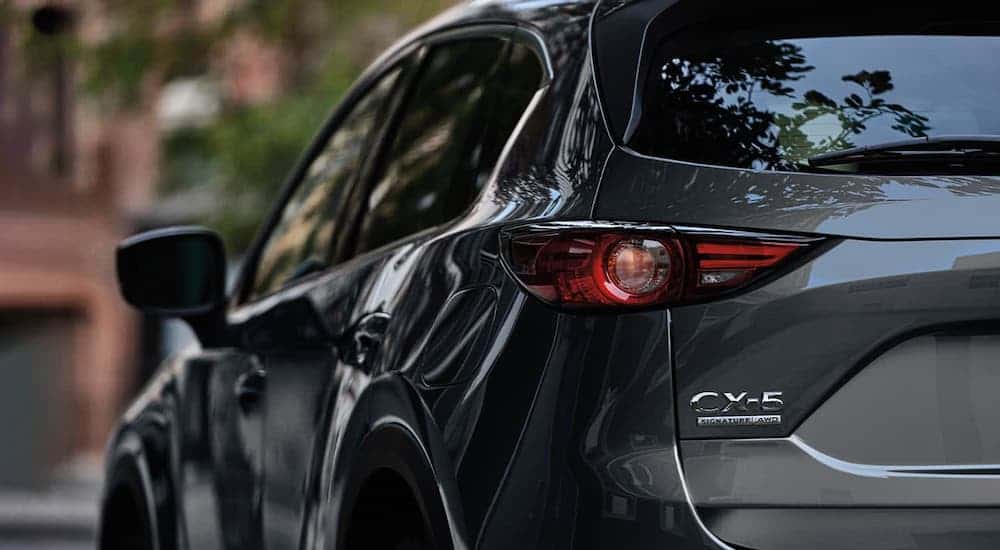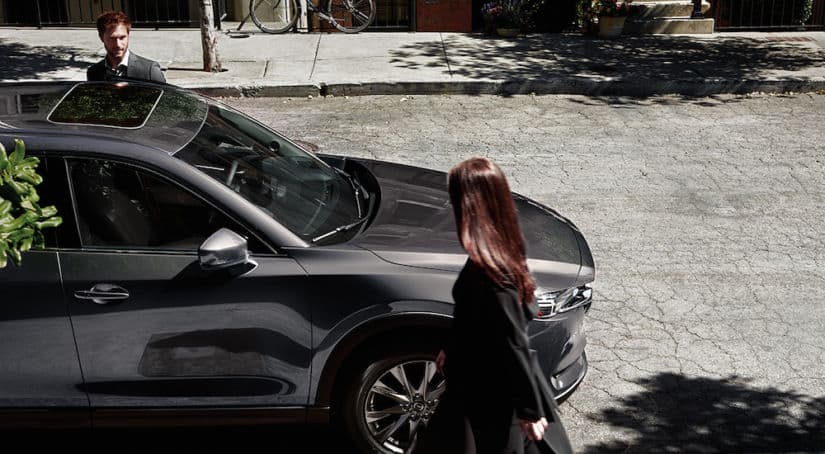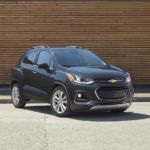Sometimes you know before a game is played which side is going to come out victorious. Once in a while, an opponent is so mismatched that there is no point in even playing the game, like the ’27 Yankees, the ’83 Oilers or the ’85 Bears. The contest is so lopsided that you know you will be heading home before halftime. However, sometimes a game must be played, a battle fought, or a duel held to determine the victor between two evenly matched combatants. Like Super Bowl XLIX, the competition is so close that it has to come down to the last play.
This can often be the case when deciding between used cars for sale. When you walk into a dealership, you are going to want to know which one to pick, especially if you are deciding between two really good cars. If you are fortunate, the dealer will have recently owned models from Mazda and Mitsubishi. These two Japanese automakers have a reputation for quality, dependability, and innovation. If there is a new feature, system, or equipment, it’s a solid bet that one of the first cars to feature it will have come to one of these two companies.
Two of the best SUVs in recent years are the Mazda CX-5 and the Mitsubishi Outlander. These two are really affordable, especially if you are buying used. They also feature some great innovative features, including infotainment systems that will keep you and your passengers connected, entertained, and informed throughout your journey. Nevertheless, there are some key differences between the 2020 Mazda CX-5 and the 2020 Mitsubishi Outlander that should help you to decide between them when you are in the market to purchase your next SUV.
Pricing and Trims

Both of these vehicles offer a number of trim options. The 2020 Mazda CX-5 has a total of 5 trims, consisting of the Sport, Touring, Grand Touring, Grand Touring Reserve, and Signature. The 2020 Mitsubishi Outlander has 6 trims, including the ES, SE, LE, SP, SEL, and GT. Both of these vehicles are available with either front-wheel drive or all-wheel drive, with Mazda using its iACTIVE all-wheel drive system while Mitsubishi employs its S-AWC technology.
Pricing for the Outlander starts at $24,895 and goes up to $33,745 for the top trim. This is virtually the same price range as the CX-5, which begins at $25,190 and increases to $37,155 for its top trim. Of course, these are only the starting prices for the different trims, and options such as all-wheel drive will cost extra.
Engines and Performance
Both the 2020 Mazda CX-5 and the 2020 Mitsubishi Outlander have two engines to choose from. The Mitsubishi Outlander features a 2.4-liter MIVEC SOHC 4-cylinder gas engine on all trims except the GT. This engine is paired with a continuous variable transmission (CVT) and produces 166 hp and 162 lb-ft of torque. The Outlander GT comes equipped with a 3.0-liter MIVEC SOHC V6 gas engine that produces 224 hp and 215 lb-ft of torque. The larger engine utilizes a 6-speed electronic automatic transmission.
The CX-5 Sport, Touring, and Grand Touring come equipped with a SKYACTIV-G 2.5-liter DOHC 16-valve 4-cylinder gas engine with cylinder deactivation that can provide 187 hp and 186 lb-ft of torque. The Grand Touring Reserve and Signature feature a more powerful SKYACTIV-G 2.5T Dynamic Pressure Turbo DOHC 4-cylinder gas engine with variable valve timing (VVT). Turbocharging boosts the strength of a small engine, while VVT provides increased efficiency. As a result, this engine produces 227-250 horsepower and 310-320 pounds to feet of torque. Both engines on the Mazda CX-5 come paired with a SKYACTIV-Drive 6-speed automatic transmission.
One thing you will notice right off the bat is that the two engines on the Mazda are much more powerful than the standard one on the Mitsubishi. As a result, the Mazda can tow up to 2,000 pounds, while the Mitsubishi can only tow 1,500 pounds. You need to get an Outlander GT if you want performance like the Mazda. However, that performance will come with a price at the gas station, since this model is less fuel-efficient than the Mazda.
The Mazda CX-5 with the 2.5-liter engine and front-wheel drive provides 25 mpg in the city and 31 mpg in the highway, while all-wheel drive models get 24 mpg in the city and 30 mpg in highway driving. With the all-wheel drive only 2.5T engine, the CX-5 gets 22 mpg in city driving and 27 mpg on the highway. The Mitsubishi Outlander GT only gets 20 mpg and 27 mpg on the highway. The other Mitsubishi Outlander trims get a slightly better fuel economy of 25 mpg in the city and 30 mpg on the highway with front-wheel drive, and 24 mpg in city driving and 29 mpg in highway driving.
Standard Safety Features

Most new vehicles are offering active safety features that leverage smart technology. This involves using things like cameras and radar to provide additional accident prevention and mitigation for your vehicle. Even the base Sport trim of the Mazda CX-5 has a solid assortment of standard safety features. These include advanced systems like radar cruise control with stop and go, blind-spot monitoring with rear cross-traffic alert, lane departure warning system with lane-keep assist, and advanced smart city brake support with pedestrian detection and collision warning.
The Mitsubishi Outlander also offers many safety features, but it cannot match the Mazda. The base model Outlander ES 2.4 only comes equipped with basic features like airbags, an anti-lock braking system, active stability control, and a rearview camera. While these are very good safety equipment and features, they do not match the smart technology systems on the Mazda. In order to get similar advanced features on a Mitsubishi, you are going to have to pay more for a higher trim level.
Interior and Exterior Capacities
The 2020 Mazda CX-5 is a two-row SUV with seating for up to 5 passengers, while the 2020 Mitsubishi Outlander has three-rows and seating for up to 7 passengers. However, the Mitsubishi has a tighter wheelbase leaving it with a cramped interior that also lacks sufficient space for cargo. The Mazda CX-5 has a 106.2-inch wheelbase that allows the CX-5 to seat up to 5 passengers comfortably. Front-row passengers will enjoy 39.7 inches of headroom and 41 inches of legroom, while passengers in the rear seat will appreciate 39 inches of headroom and 39.6 inches of legroom. In addition, the CX-5 has a spacious 30.9 cubic feet of cargo space that easily expands to 59.6 cubic feet of space with the second row folded down.
Mitsubishi tried to squeeze a third row of seats into the Outlander, and it shows. With a wheelbase of only 105.1 inches, the Outlander compromises on both passenger comfort and space for cargo. Front row passengers receive an adequate 40.6 inches of headroom and 40.9 inches of legroom, but once you get into the rear two rows, things start to get a little too cozy. The second row only provides 38.4 inches of headroom and 37.3 inches of legroom, while the third row gets really tight with just 35.7 inches of headroom and 28.2 inches of legroom.
This lack of space continues in the rear. With both rear rows down, the Outlander provides a solid 63.3 cubic feet of space for cargo, but it only provides 10.3 cubic feet of cargo space with all seats in place. In order to get an adequate 34.2 cubic feet of space, you must fold down the rear seat. This begs the question of why Mitsubishi saw fit to add a third row of seats to the Outlander when they are inadequate for passenger comfort and take a huge bite out of the vehicle’s room for parcels and luggage.
In the Old West, whenever there was a duel, there could only be one left standing. In this duel, the 2020 Mazda CX-5 comes out the clear winner, with a more efficient engine, more standard safety features, and a better allocation of interior space.



